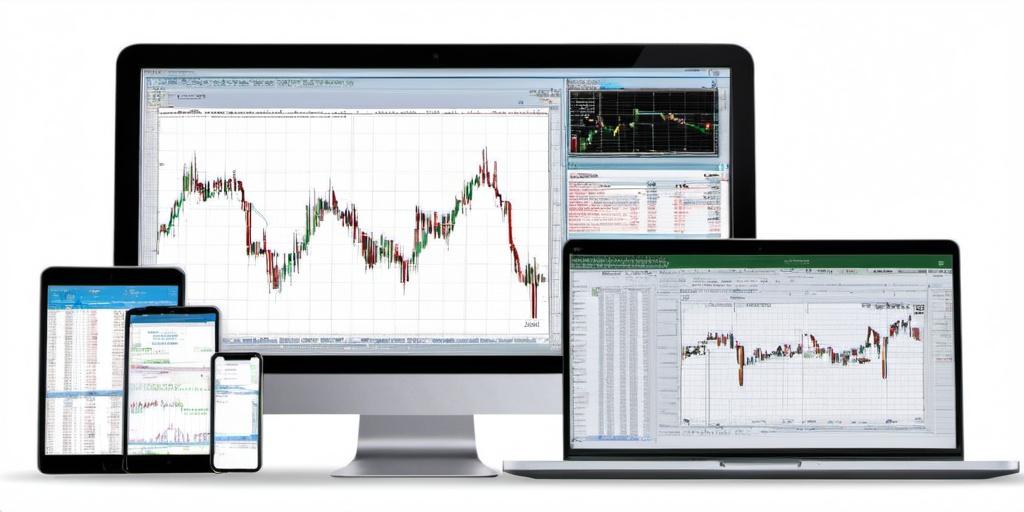Analytic software
YukonSoft >> Analytic softwareLearn more about Analytic software

Understanding Trading Software: A Financial Blogger’s Perspective
So, you’re thinking about trading software, right? Good call. First off, it’s all about making your life easier when you’re knee-deep in stock charts and trading strategies. If you’ve been around the block, you know how trading used to be all shouting in pits and frantic phone calls. These days, it’s more about the right software. It’s like comparing a flip phone to a smartphone—and who doesn’t want the smartphone version of trading tools?
The Evolution of Trading Software
Trading software’s come a long way, baby. Think about the early days when you had those clunky terminals that looked like they belonged on a NASA spaceship. Fast forward to today, and you’ve got sleek platforms that run on your phone. Remember when folks used to crowd around a single screen to get the latest stock ticker? Now, you can do it from your sofa with a cup of coffee in hand. It’s all about efficiency—and maybe a bit of showing off to your friends about how tech-savvy you are.
Why Traders Love Their Software
When you’re trading, time is money—and not in that cliché way your grandpa used to say. Good trading software lets you make decisions faster than you can say “bull market.” You get real-time data, analytical tools, and the ability to execute trades at the speed of thought. Ever tried to buy a stock when it’s on a roll and lose out because you hesitated? These platforms cut down the lag, giving you the edge in a game where every second counts.
Types of Trading Software
There are basically two main categories here: retail and institutional. Retail software is what the day-to-day trader uses. If you’re reading this, it’s likely you. Institutional software? That’s the big leagues—think hedge funds and investment banks. It’s like comparing a family sedan to a Formula 1 car. Both will get you places, but one does it with a bit more flair and speed.
Retail Trading Platforms: The Everyman’s Tool
Platforms like E*TRADE and TD Ameritrade cater to retail traders. They pack in a ton of features, yet they don’t overwhelm you with complexity. If you need to pull up a chart, execute a trade, or review your portfolio’s performance, it’s all there with a click. And, if you’re fancy enough, you can even tweak the settings to your taste. It’s like customizing a pizza—everyone’s got their own preference.
Institutional Trading Systems: The Heavy Hitters
Now, institutional systems, like Bloomberg Terminal, are a different kettle of fish. They’re the stuff of legend in finance circles. You might not need one, but it’s always cool to know what the big players are using. These platforms provide an insane level of detail, analytics, and, frankly, a bit of intimidation for those not in the know. It’s as close as a finance geek gets to driving a sports car.
Key Features of Trading Software
Let’s break it down a bit. Any trading software worth its salt should have:
- Real-time Data: If the data’s old, you might as well toss it out the window.
- User-friendly Interface: You don’t want to feel like you’re defusing a bomb every time you make a trade.
- Advanced Analytics: Because sometimes, you want to dig deeper than surface-level stats.
- Mobility: Trading on-the-go isn’t a luxury anymore; it’s a necessity.
- Security: Protecting your financial info is a big deal; ask anyone who’s been hacked.
Analyzing the Benefits of Trading Software
Considering the perks of trading software, it’s evident why they’re indispensable. They automate drudgery, so you’re not stuck manually tracking dozens of stocks. Not to mention, they equip you with data that might otherwise require a team of analysts to compile. Plus, with a good software suite, your accuracy often improves because you can simulate trades before committing real cash. It’s like test-driving a car. Why wouldn’t you?
Personal Anecdotes and Observations
Picture this: You’re at a family BBQ, and your cousin starts boasting about their “killer” trades. Meanwhile, you’re quietly executing trades on your phone, using software that gives you an edge. By the end of the day, who’s smiling? You. Because while they were jawing on, you were making moves—and that’s the beauty of having the right trading software at your fingertips.
Challenges and Considerations
Sure, trading software’s not all sunshine and rainbows. You need a reliable internet connection, and there’s always the risk of tech glitches. Nothing more frustrating than seeing a juicy opportunity slip by because your app crashed. And, of course, there’s the learning curve. If you’re jumping in fresh, it might feel like trying to drive a stick shift for the first time. But once you’re familiar, it’s smooth sailing from there.
Final Thoughts
When it comes to trading software, don’t skimp on research or investment. Finding the right tool can turn trading from a chore into a more manageable venture. Dive in, explore options, and soon enough, you’ll be the one bragging about trades at the next family get-together—and not just because your software did all the heavy lifting. So, what’s your move?